
We collect basic website visitor information on this website and store it in cookies. We also utilize Google Analytics to track page view information to assist us in improving our website.
Written by: Ryan Smith
Forests cover about 31% of the world's land area (FRA 2020), playing a critical role in maintaining ecological balance, supporting biodiversity, and providing livelihoods for millions of people. Yet these vital ecosystems are under unprecedented threat. In the coming decades, the diminishing availability of productive land, competition from other land uses, and climate change will increasingly place global forests under threat (Kissinger, Herold, & De Sy, 2012).
Artificial Intelligence (AI) may serve as a powerful tool to reverse the adverse effects of human activity on forested areas. This technology's capacity to analyze vast datasets to make insightful predictions can significantly enhance our approach to forest management. In doing so, AI propels us towards a sustainable coexistence with these vital ecosystems, ensuring their preservation for future generations.

Artificial Intelligence (AI) is a branch of computer science dedicated to creating machines capable of performing tasks that typically require human intelligence. At its core, AI involves the development of algorithms and computational processes that enable computers to learn from data, make decisions, and solve problems. This technology spans several fields, including machine learning, natural language processing, robotics, and computer vision, each contributing to the vast capabilities of AI systems. In forest conservation solutions, machine learning, a subset of AI, has become instrumental in analyzing complex environmental data, enabling predictive modeling for monitoring deforestation and land use changes, predicting and managing wildfires, and species distribution mapping (Perry et al., 2022).
The world has a total forest area of 4.06 billion hectares (ha) of forest as of 2020 (FRA 2020). Regulating activities that result in canopy loss such as logging, agricultural expansion and mining is essential for protecting forest ecosystems. Ensuring regulatory compliance is crucial but is often challenged by the high costs associated with manual monitoring. Employing AI solutions can help to reduce labour cost on compliance monitoring and improve accuracy. By processing vast amounts of satellite data, AI can pinpoint areas of deforestation, track the expansion of agricultural lands into forested territories, and detect signs of illegal logging activities. This real-time surveillance allows for immediate action, facilitating interventions before irreversible damage occurs.

The advent of AI has opened new horizons in predicting and managing wildfires, a threat that is becoming increasingly frequent and severe due to climate change (Flannigan et al., 2009). By harnessing the power of AI algorithms, we can now analyze vast datasets encompassing weather patterns, historical fire occurrences, and other environmental factors, providing predictive insight necessary to foresee wildfire outbreaks. This predictive capability is not just about foreseeing the occurrence of fires but also about understanding their potential severity, spread, and impact on ecosystems and human settlements.
It is widely accepted that the emergence of the human industrial era is responsible for the ongoing 6th global mass extinction event. Vertebrate species loss over the last century is up to 100 times higher than the background rate, indicating that a sixth mass extinction is already underway (Ceballos et al., 2015). Implementing conservation strategies around our forests is vital for the protection of our biodiversity. The identification of key habitat features to better understand species presence, abundance and distribution is essential to effectively implement targeted conservation strategies. Gathering this data at a landscape level is very costly.
AI plays a crucial role in mitigating these costs and enhancing the effectiveness of conservation strategies. AI can analyze vast amounts of data from satellite imagery, drones, and sensor networks to identify key habitat features with unprecedented speed and accuracy. This capability enables conservationists to monitor wildlife populations, track changes in habitat quality, and predict potential threats to biodiversity with a level of detail that was previously unattainable.
The Muskoka Integrated Watershed Management project located in Central Ontario was completed by Dougan & Associates in 2023. The project leveraged advanced AI technologies, particularly in GIS modeling and machine learning, to enhance watershed management and species conservation. By employing deep learning and GIS modeling, powered by high-resolution LiDAR data and multispectral imagery, the project achieved detailed classification of terrestrial, wetland, and aquatic systems. This precise land cover mapping facilitated the identification of ecologically significant areas, including habitats for rare and endangered species. Machine learning models were employed to predict potential locations for select species based on their habitat preferences and known occurrences. This methodology not only refined the understanding of land cover types within the watershed but also enhanced habitat suitability models for wildlife conservation. The combined use of cutting-edge technologies ensured an accurate and comprehensive assessment of natural capital, crucial for integrated watershed management and ecological preservation.

The potential for AI to have a positive impact on forest conservation is profound, yet its application in this field is still in the early stages of adoption. To effectively utilize AI for forest conservation, a collaborative and holistic strategy is vital. Collaborative investment is needed from the private and public sector tailored for environmental preservation, involving interdisciplinary efforts that blend computer and ecological sciences. Policy frameworks must evolve to support AI's role in forest management, encouraging the open sharing of environmental data and enforcing AI-driven compliance monitoring.
References
Ceballos, G., Ehrlich, P. R., Barnosky, A. D., García, A., Pringle, R. M., & Palmer, T. M. (2015). Accelerated modern human-induced species losses: Entering the sixth mass extinction. Science Advances, 1(5), e1400253. https://doi.org/10.1126/sciadv.1400253
Flannigan, M., Krawchuk, M., Groot, W., Wotton, B., & Gowman, L. (2009). Implications of changing climate for global wildland fire. International Journal of Wildland Fire, 18, 483-507. https://doi.org/10.1071/WF08187.
Food and Agriculture Organization of the United Nations. (2020). Global Forest Resources Assessment 2020: Key findings. FAO. http://www.fao.org/forest-resources-assessment/2020/en/
G. L. W. Perry, R. Seidl, A. M. Bellvé, W. Rammer, An outlook for deep learning in ecosystem science. Ecosystems 25, 1700–1718 (2022). https://doi.org/10.1007/s10021-022-00789-y.
Kissinger, G., M. Herold, V. De Sy. Drivers of Deforestation and Forest Degradation: A Synthesis Report for REDD+ Policymakers. Lexeme Consulting, Vancouver Canada, August 2012.
Written by: Summer Graham
Although often overlooked, wetlands are diverse and ecologically important ecosystems that play a crucial role in maintaining biodiversity, water quality, and providing various ecological services. Wetlands are often protected by policy from impacts of development and human activity, and for good reason. Wetlands are home to about 40% of species worldwide and are essential for providing both food and clean water.

Wetlands are defined as areas on the landscape that are saturated with water, either permanently or seasonally, resulting in the development of specific vegetation that is adapted to wet conditions. Canada is home to a wide range of wetland types, including marshes, swamps, bogs, and fens.
Marshes are wetlands with shallow water, often found along the edges of rivers, lakes, and coastlines. They often contain plants such as Cattails, native grasses like Canada Bluejoint, Water Lilies, and Pickerel Weed.
Swamps are wetlands characterized by standing water and dominated by trees and woody vegetation, which is how they differ from the open habitat of marshes. Similar to marshes, they can be freshwater or saltwater, depending on their location and the type of water they contain. The presence of trees tolerant of wet conditions, such as Black Ash, Eastern White Cedar, and Silver Maple can indicate a swamp environment.
Bogs are acidic wetlands with waterlogged, spongy ground. They are commonly surrounded by peat, a type of organic material that accumulates over time. Bogs are typically nutrient-poor and may have a distinctive plant community due to this fact, with species that gather nutrients from other sources or are adapted to the poor conditions. Bogs often support specialized vegetation like sphagnum moss, carnivorous plants like Pitcher Plant, and tree species such as Black Spruce.
Fens are also peat-forming wetlands but differ from bogs in that they receive water from sources other than precipitation, such as groundwater or surface water. Fens are less acidic than bogs and tend to have a higher nutrient content. Fens support a variety of plant life, including species like Tamarack, Bog Buckbean, and Cotton Grass.
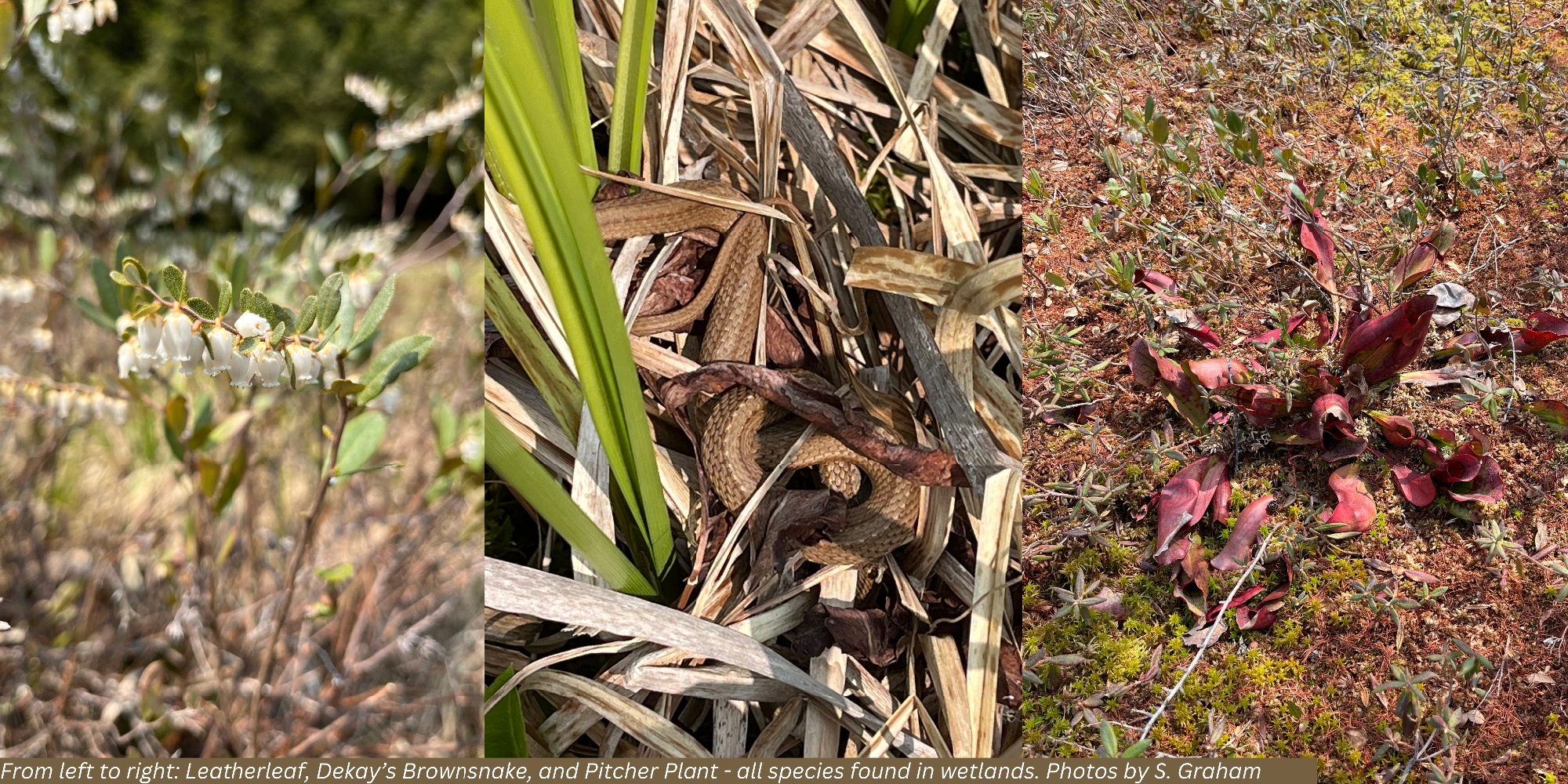
Wetlands provide essential services to humans as well as being an integral part of the mosaic of ecosystems present on the Canadian landscape. Some of these ecological services include habitat for diverse flora and fauna, water filtration, flood control, and carbon storage. However, they are also vulnerable to human activities such as drainage, agriculture, and development, which can lead to habitat loss and degradation.
Just like any other natural habitat, wetlands face threats from human development and are removed or degraded where cities and towns now exist. You can help by returning these features to the landscape whenever possible. Rain gardens are one of the easiest ways to do this in an urban environment. By planting native wetland vegetation in a wet pocket of your yard, you can help slow the flow of water from your property, while filtering the water and supporting wildlife at the same time!
There are many online guides for creating rain gardens, try and find one for your location to ensure species recommended will be suitable. We’ve provided some links below to get you started.
Toronto and Region CA, Ontario: Complete guide to building and maintaining a rain garden
City of Guelph, Ontario: Sample rain garden design
Okanagan-Similkameen, British Columbia: Simple how-to
Calgary, Alberta: Calgary rain garden
University of Saskatchewan: Rain garden how-to
City of Brandon, Manitoba: All about water - rain garden
City of Charlottetown, PEI: How to create a rain garden
Looking to buy native wetland and rain garden species? Check out the Find a Native Plant Nursery Map here!

Additional reading
Ducks Unlimited Canada - Wetlands
Government of Canada - Wetlands
Written by: Summer Graham
Do you spend hours each week mowing your lawn to keep it maintained? Are you tired of spending money on herbicides to keep weeds at bay, or fertilizers to keep grass growing? Do local water use restrictions stop you from watering your yard, leaving it dry, brown and crispy in the summer? If you answered “yes” to any of these questions, a naturalized yard might be 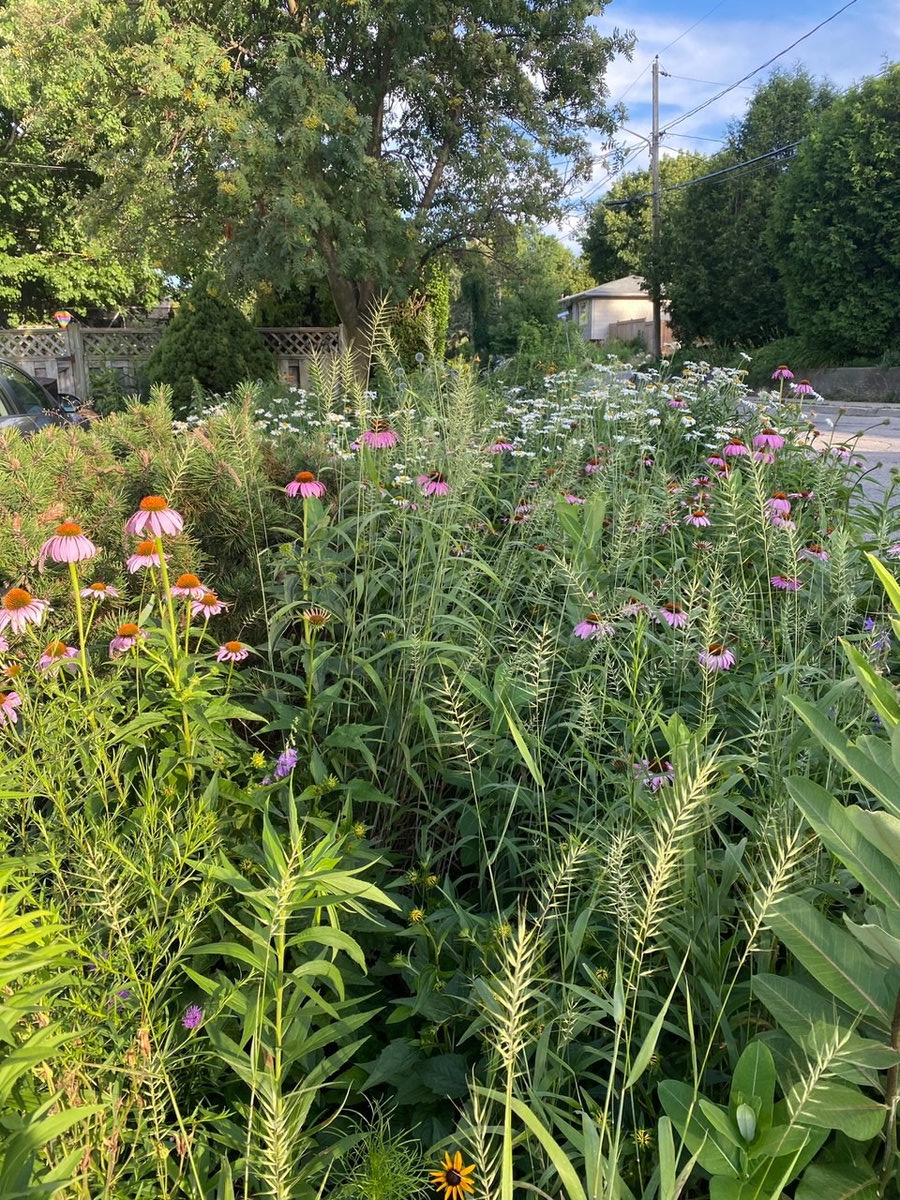 for you!
for you!
Naturalization is more than just “letting your yard go”, it’s a way of
reducing the amount of effort needed to maintain an area by replacing a manicured lawn with native plants that are allowed to grow naturally. Native plants are selected and planted in a way that mimics naturally occurring habitat (e.g. woodland, wetland, or prairie), and the end result can provide a wide variety of benefits, including:
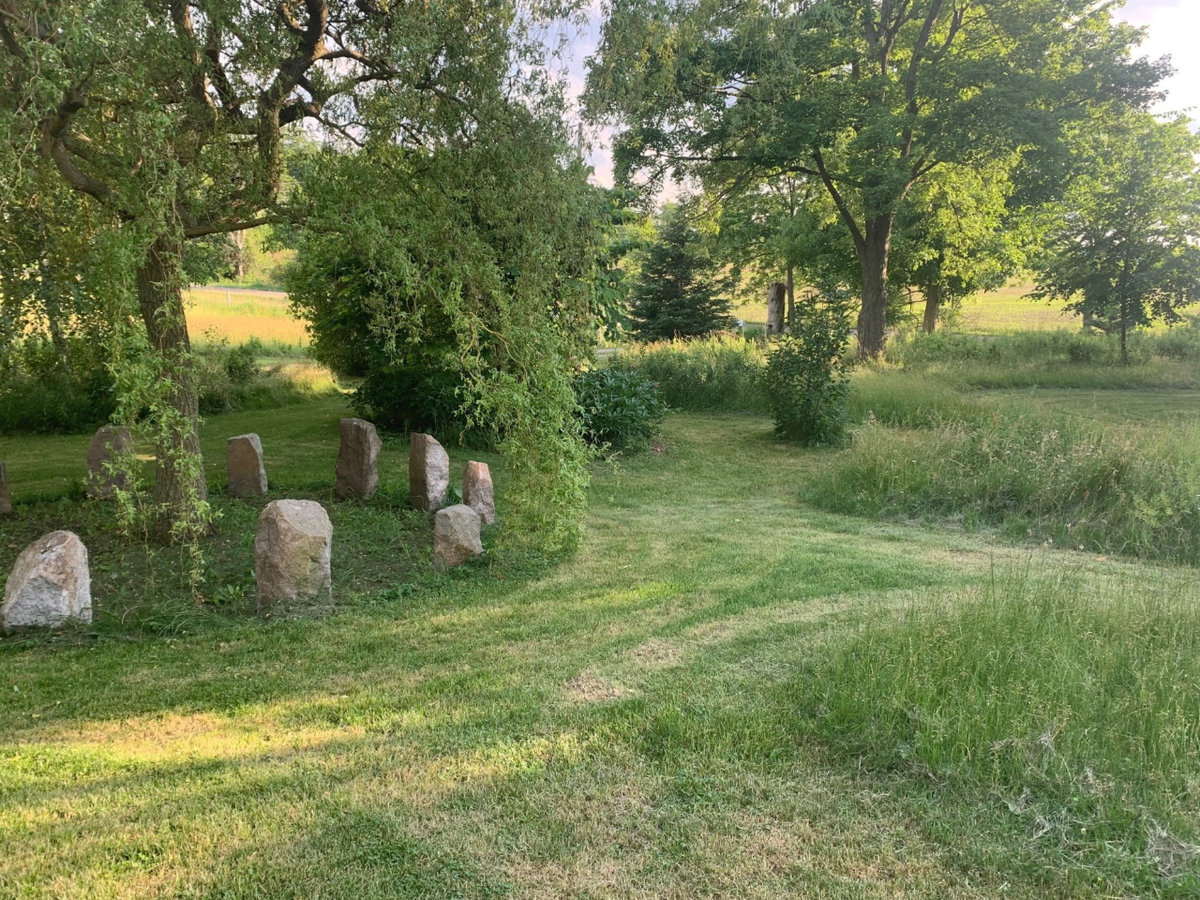 As mentioned before, naturalizing your lawn is more than just not mowing it. So, what if you lack the resources or time to fully naturalize your yard, but you still want to replace some of your lawn? Most people aren’t ready to completely give up the benefits and ease of a low, consistent ground cover, or maybe they can’t naturalize the front of their yard due to local restrictions. Luckily, there are plenty of native species that can be substituted for grass! These species can be substituted for lawn and will remain fairly short and low to the ground, maintaining the open, clean look a grass lawn provides. Native sedge species are particularly easy and attractive grass replacements, forming dense, soft mats perfect for lounging or playing frisbee on!
As mentioned before, naturalizing your lawn is more than just not mowing it. So, what if you lack the resources or time to fully naturalize your yard, but you still want to replace some of your lawn? Most people aren’t ready to completely give up the benefits and ease of a low, consistent ground cover, or maybe they can’t naturalize the front of their yard due to local restrictions. Luckily, there are plenty of native species that can be substituted for grass! These species can be substituted for lawn and will remain fairly short and low to the ground, maintaining the open, clean look a grass lawn provides. Native sedge species are particularly easy and attractive grass replacements, forming dense, soft mats perfect for lounging or playing frisbee on!
| Graminoid Species | |
Pennsylvania Sedge(Carex pensylvanica)
|
|
Ebony Sedge(Carex eburnea)
|
|
Rosy Sedge(Carex rosea)
|
|
| Woody Species | |
Creeping Juniper(Juniperus horizontalis)
|
|
Bunchberry(Cornus canadensis)
|
|
Bearberry(Arctostaphylos uva-ursi)
|
|
Wintergreen(Galutheria procumbens)
|
|
| Other Native Options | |
Woodland Strawberry(Fragaria vesca)
|
|
Barren Strawberry(Geum fragarioides)
|
|
Common Cinquefoil(Potentilla simplex)
|
|
Native Mosses
|
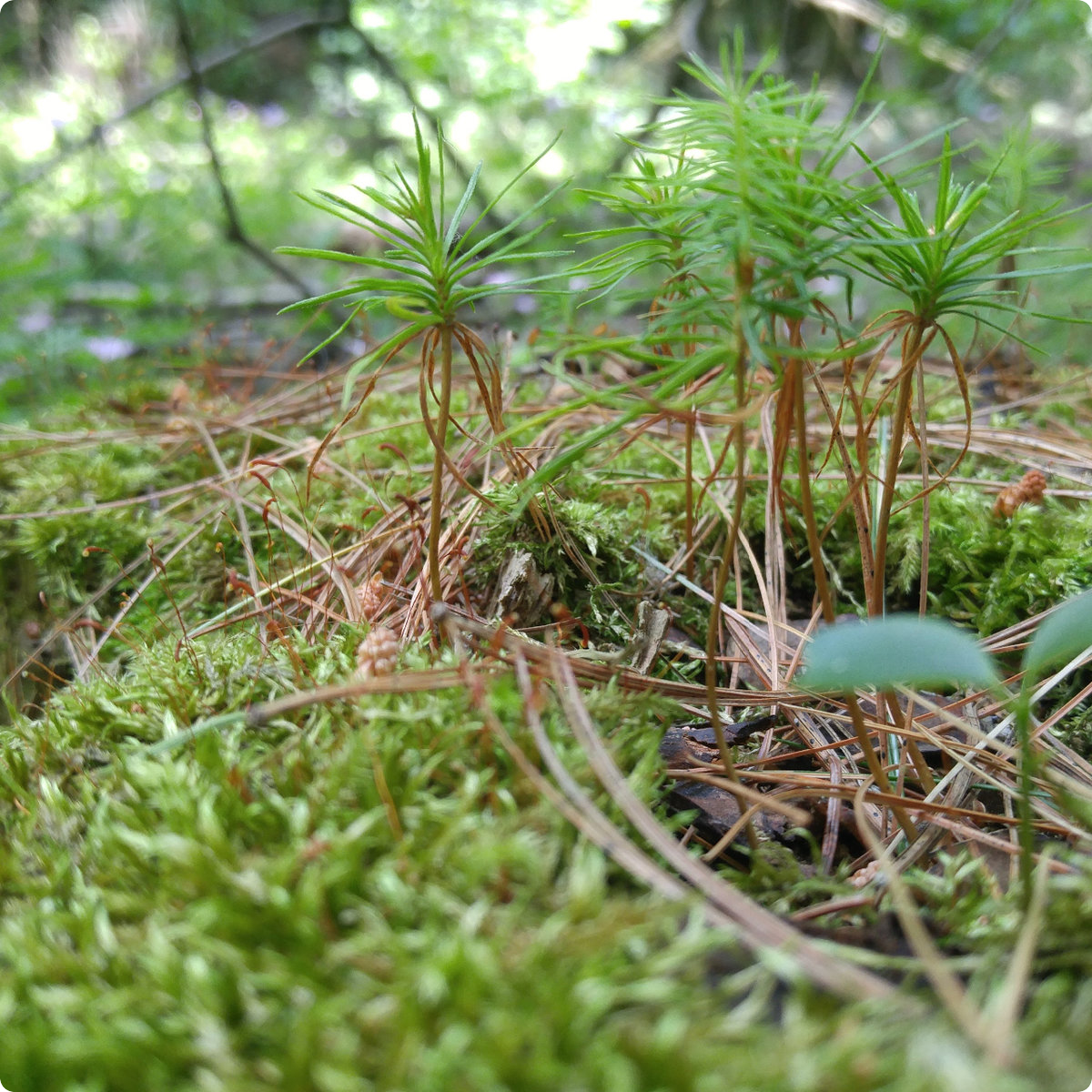 |
Advice from our staff with natural yards:
Heather – “I find the best method [for naturalization] is to put cardboard overtop of grass and then cover with leaves and/or mulch. The dying grass contributes nitrogen and the cardboard adds carbon. I cut into the cardboard and plant right into it. “
Zack – “I’m a big fan of Strawberry as a groundcover for lawn replacement. I’ve got a big patch of Fragaria vesca that has taken over a shaded section of my lawn. My Carex pensylvanica is also creeping out of my garden in to the shaded lawn areas and will probably outcompete grasses in these spots.”
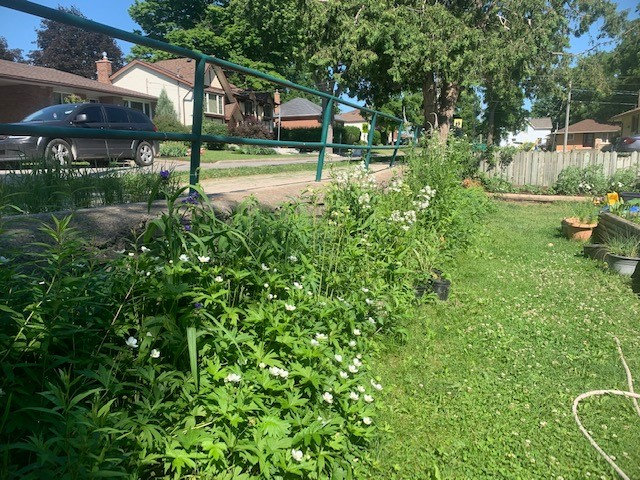 Jim – “Stopping mowing or abandoning cultivation is one route [to lawn naturalization] but it generally triggers a 2-3 year burst of annual/biennial ‘weeds’ (lots of clovers, Dandelions, Queen Anne’s Lace, Evening Primrose, Canada and Bull Thistles, Common Milkweed, Oxeye Daisy, Black Medic and Bird’s-foot Trefoil) until the Goldenrods get established and spread, which they will do just about anywhere in southern Ontario whether in urban backyards or in hardscapes. Most people are fearful of letting things succeed naturally, so amending with seed mixes containing some favorite native wildflowers is worthwhile but doesn’t eliminate the weedy cycle.
Jim – “Stopping mowing or abandoning cultivation is one route [to lawn naturalization] but it generally triggers a 2-3 year burst of annual/biennial ‘weeds’ (lots of clovers, Dandelions, Queen Anne’s Lace, Evening Primrose, Canada and Bull Thistles, Common Milkweed, Oxeye Daisy, Black Medic and Bird’s-foot Trefoil) until the Goldenrods get established and spread, which they will do just about anywhere in southern Ontario whether in urban backyards or in hardscapes. Most people are fearful of letting things succeed naturally, so amending with seed mixes containing some favorite native wildflowers is worthwhile but doesn’t eliminate the weedy cycle.
Also, it is worth mentioning that most meadows eventually attract woody species (native and non-native) as meadow is not normally a permanent state here, and intervention (i.e. at least one annual mowing) is required to keep these species in check. The speed that woody species move in depends on available seed sources, which aren’t always of desirable species in urban areas, and increasingly are dominated by Buckthorn.”
When searching the Network of Nature database for good groundcover species for your yard, select your province in Native Rage and then “ground cover” under Growth Form. If you have any furry friends or young children that like to play in your yard, be sure to do a little more research and use native species known to be non-toxic to kids and pets!
Resources and more reading
Naturalized Lawns Reduce Need for Mowing and Trimming
Edmonton Pushing for Lawns to Go Natural
Groundcovers and Lawn Alternatives
Gardening with Native Plants – BC
Join our email list to receive occasional updates about Network of Nature and ensure you get the news that matters most, right in your inbox.